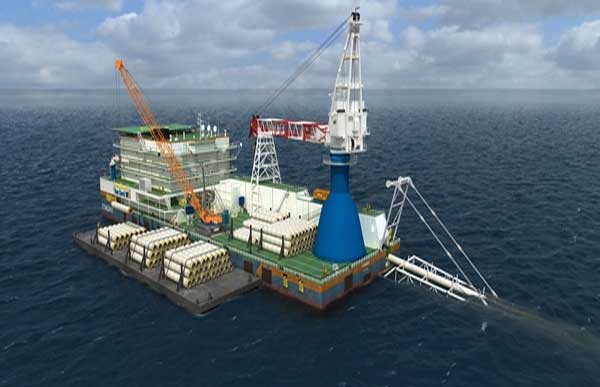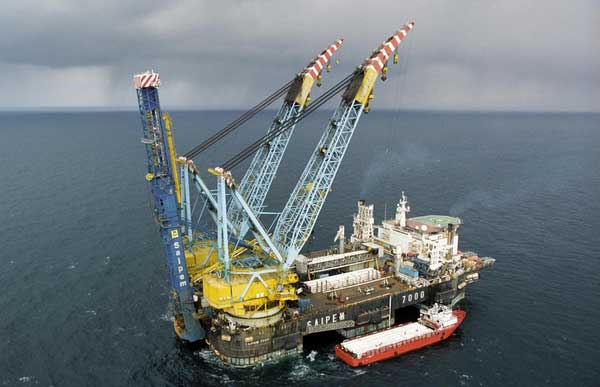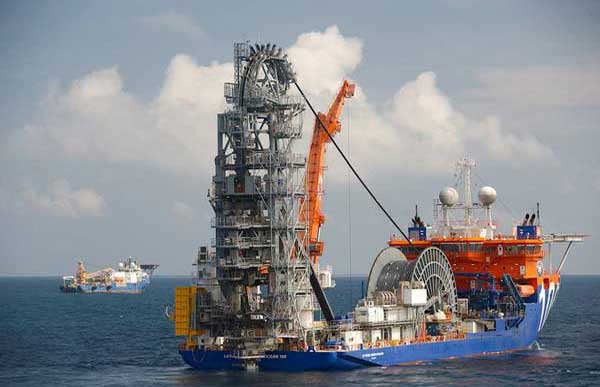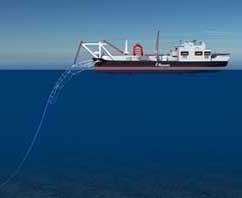Subsea methods for pipeline laying |
The most common subsea installation methods are the S-Lay, J-Lay, and Reel-Lay methods
In the S-Lay method, single lengths of steel pipe (joints) are welded, inspected and coated in a horizontal working plane (firing line) on board a pipelay vessel. As the vessel moves forward, the pipe gradually exits the firing line, curving downward through the water until it reaches the touchdown point on the seabed. As more pipe is paid out - under its own weight it assumes the "S"-shaped curve.
The curvature of the upper section of the pipeline (the overbend) is controlled by a stinger, a steel structure with rollers protruding from the end of the firing line to prevent buckling of the pipe.
The curvature in the lower section of the pipeline (the sagbend) is controlled by pipe tensioners, caterpillar tracks that grip the pipe. The amount of tension is one of the most important factors in the capabilities of an S-Lay vessel.
 van Oord's Stingray uses the S-Lay method
van Oord's Stingray uses the S-Lay method
J-Lay is used to install rigid pipelines in deep water. In a J-Lay system, pipe stems, consisting of up to six pipes with a total length of 72 m, are lifted and welded to the sea-going pipe in a nearly vertical slope.
The angle of the slope is set so that it is in line with the overhead of the pipe to the seabed. In this way, bending of the pipe is minimized. The J-Lay method is very suitable for deep water because the pipe leaves the laying system in a nearly vertical position and the pipeline is bent only once during installation (on the seabed).
This reduced amount of bending is beneficial for installing pipelines that are prone to fatigue. Compared to other laying methods, J-Lay has a relatively low production rate due to welding the pipe in one position. The J-Lay method is less suitable for shallow waters because it requires a departure angle close to horizontal.
 Saipem's 7000 barge uses the J-Lay method
Saipem's 7000 barge uses the J-Lay method
In the Reel-Lay method, the pipeline is installed from a huge reel mounted on an offshore vessel. Pipelines are assembled at an onshore spool-base facility and spooled onto a reel which is mounted on the deck of a pipelay barge. Horizontal reels lay pipe with an S-Lay configuration. Vertical reels most commonly do J-Lay, but can also S-Lay.
 McDermott's North Ocean 105 uses the Reel-Lay method
McDermott's North Ocean 105 uses the Reel-Lay method

